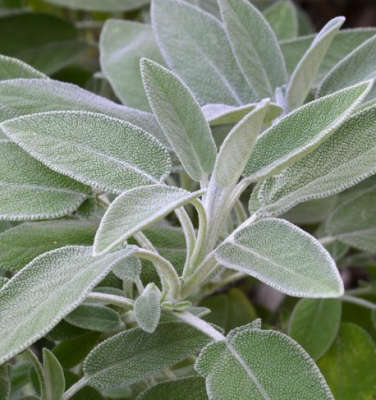

There are lots of salvias, but S. officinalis—garden or common sage— is the one you want to throw into the stew.
Over the centuries sage has been used as a local anesthetic, to ward off evil spirits, and even boost fertility. In the kitchen, it’s considered an essential herb (along with parsley, rosemary, and thyme— thanks “Scarborough Fair”). It adds an earthy flavor to fatty meats and is typically found in Thanksgiving stuffing. Plant in a sunny spot indoors or out. Sage loves it dry, so don’t overwater once established. Spread compost around your plant once or twice a season. Look for colorful cultivars like ‘Purpurascens’ and ‘Icterina’. Shrubs can hit three feet, but smaller cultivars are available.